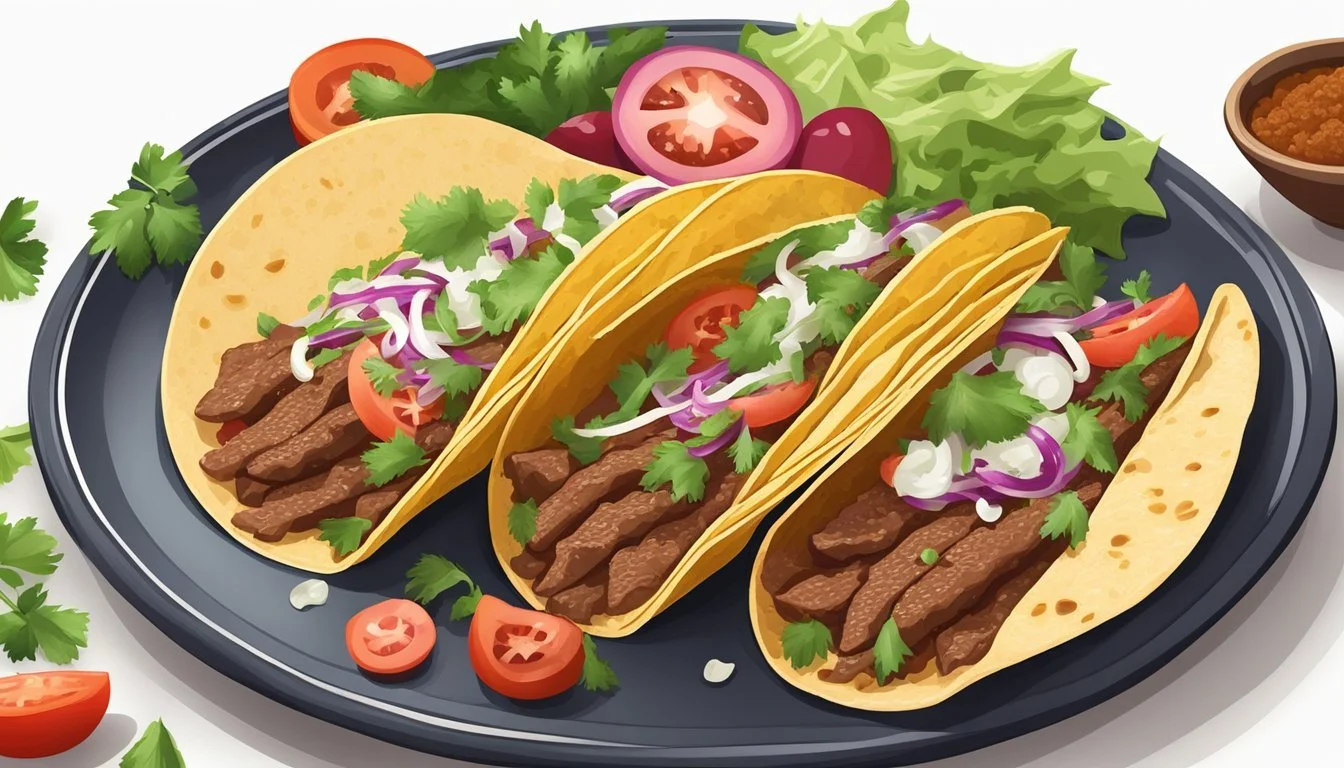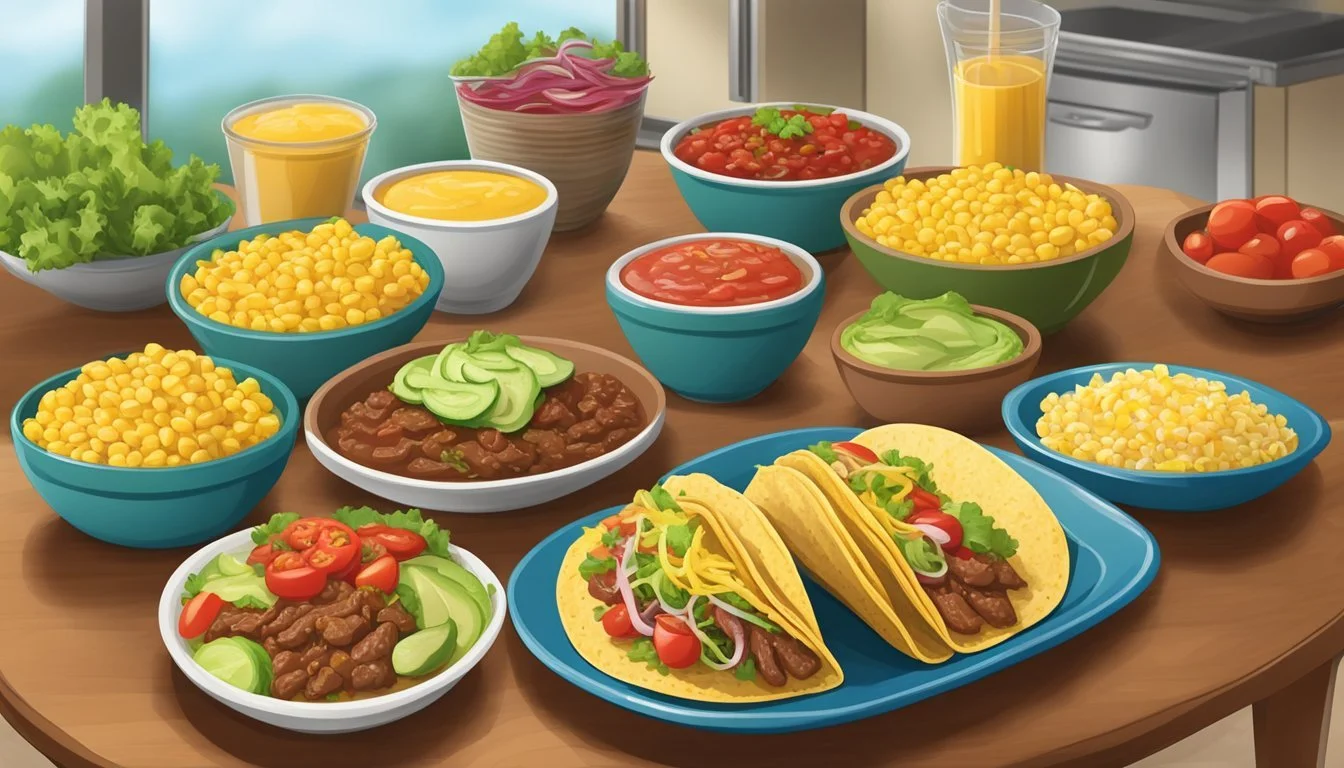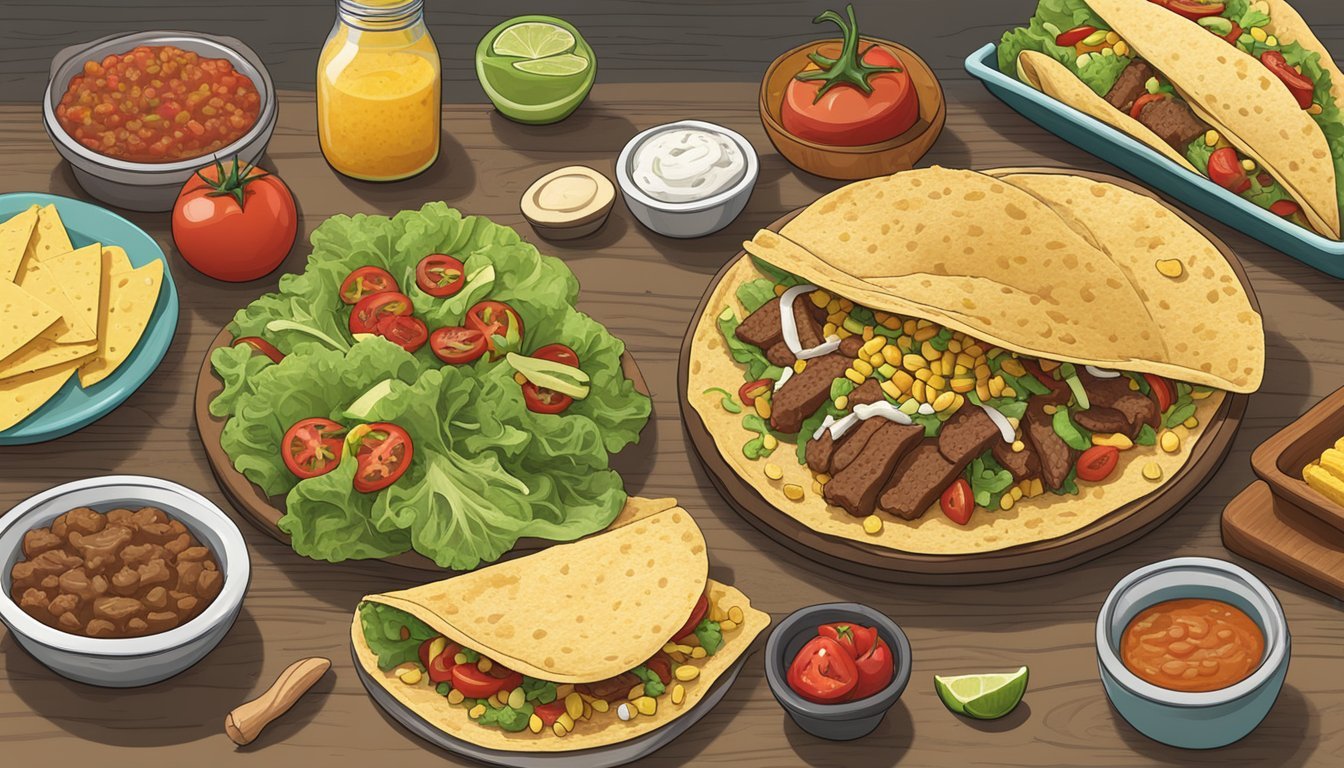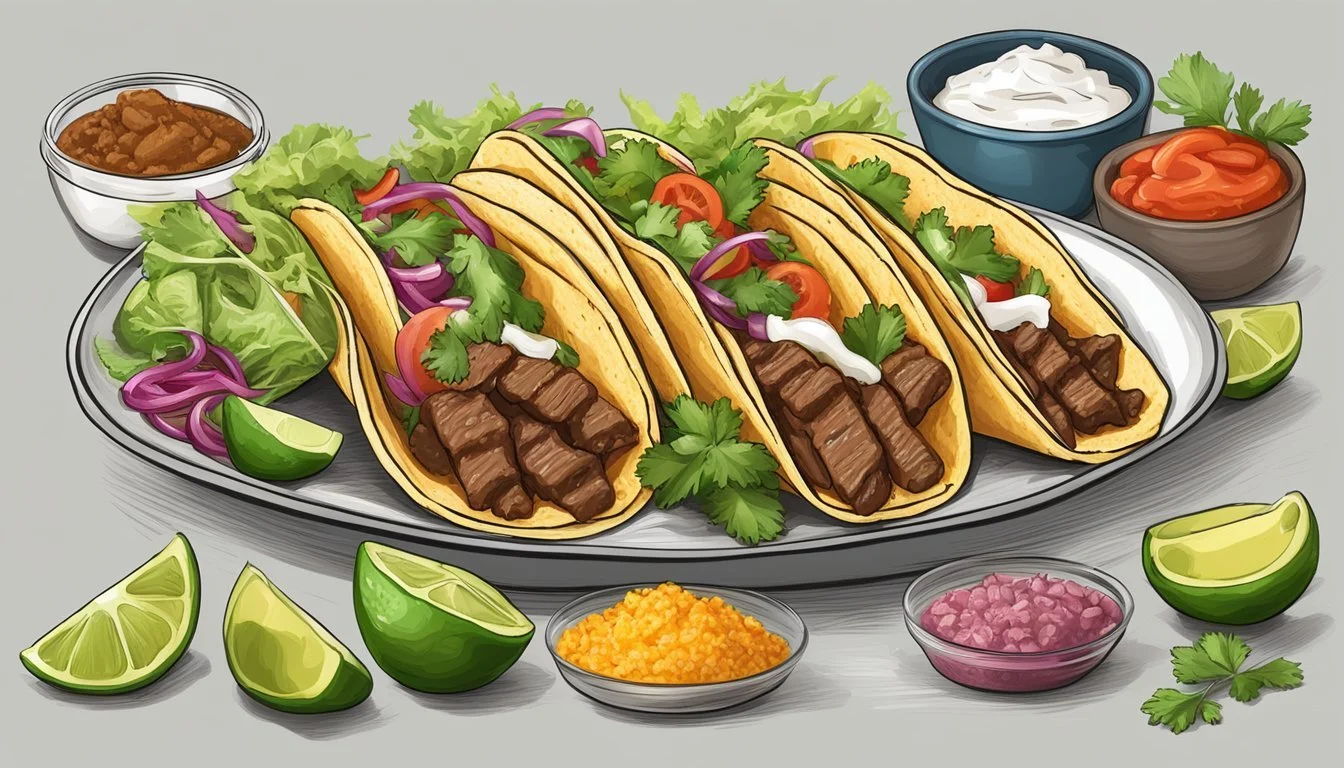Is Beef Tacos Gluten-Free?
Unveiling the Truth About Taco Ingredientsc
When considering whether beef tacos (What wine goes well with beef tacos?) are gluten-free, clarity on ingredients is essential. Tacos often consist of a tortilla filled with seasoned beef and a variety of toppings like lettuce, cheese, and salsa. Corn tortillas, traditionally used in Mexican cuisine, are inherently gluten-free. However, wheat tortillas, another common choice, do contain gluten. As gluten is a protein found in wheat, barley, and rye, those with gluten sensitivities must strictly avoid these grains.
The seasoned beef in tacos is usually gluten-free, as it primarily consists of ground beef and a blend of spices. Potential gluten contamination could occur if the spice mix contains additives or if the beef is prepared with sauces and seasonings that include gluten-containing ingredients. Similarly, some taco toppings may pose a risk for those avoiding gluten. It is crucial for individuals with celiac disease or non-celiac gluten sensitivity to verify the absence of gluten in all components of the taco.
To ensure a taco is gluten-free, meticulous attention to detail is required during both preparation and serving. Cross-contamination is a significant concern, notably in kitchens where gluten-containing foods are handled. For those with gluten intolerance, it is imperative to confirm that the taco is prepared in a gluten-free environment with gluten-free utensils. This careful approach allows individuals sensitive to gluten to safely enjoy beef tacos without compromising their health.
Understanding Gluten and Celiac Disease
This section provides insights into the nature of gluten, its effects on individuals with celiac disease, and considerations for those seeking gluten-free options, such as in the choice between flour or gluten-free tortillas for beef tacos.
What Is Gluten?
Gluten is a group of proteins found in grains such as wheat, barley, and rye. It's responsible for the elastic texture of dough and is commonly found in breads, pastas, and cereals. In the context of tacos, traditional flour tortillas contain gluten, whereas corn tortillas are widely recognized as a gluten-free alternative, provided they are free from cross-contamination during production.
Overview of Celiac Disease
Celiac disease is an autoimmune disorder triggered by the ingestion of gluten. Individuals with celiac disease experience a harmful immune response that damages the lining of the small intestine, which can lead to malabsorption of nutrients. A strict, lifelong gluten-free diet is the only current treatment.
For those with celiac disease or gluten sensitivity, it is crucial to ensure that all components of a dish, including taco fillings and seasonings, are gluten-free. This means verifying that taco meats are free from gluten-containing seasoning mixes, marinades, or additives.
Ingredients in Traditional Beef Tacos
In crafting traditional beef tacos, it is crucial to understand the individual components that make up this beloved dish, as well as to recognize the potential presence of gluten in some of these ingredients.
Typical Components of Beef Tacos
Meat:
Beef: Often, ground beef is used for its texture and flavor, which forms the base of the taco filling.
Vegetables:
Lettuce: Provides crunch and freshness.
Onions: Can be cooked with the beef or served raw for added bite.
Tomatoes: Fresh tomatoes are a common garnish, offering a juicy, acidic complement to the meat.
Dairy:
Cheese: Grated cheese like cheddar or Monterey Jack is sprinkled atop for a creamy, melting texture.
Starch:
Taco Shells: Traditionally made from corn, but flour tortillas are also frequently used.
Corn Tortillas: Gluten-free option, providing the classic taste and texture of a taco.
Flour Tortillas: Often used for soft tacos, though not gluten-free.
Seasoning:
Taco Seasoning: A blend of spices that may include cumin, chili powder, garlic powder, onion powder, and sometimes additives that can contain gluten.
Identifying Gluten in Common Ingredients
When assessing ingredients for gluten:
Taco Shells/Corn Tortillas: Pure corn tortillas are inherently gluten-free, but cross-contamination can occur during manufacturing. Always check that they are certified gluten-free if there is a sensitivity or intolerance to gluten.
Flour Tortillas: These are typically made with wheat flour and are not gluten-free.
Taco Seasoning: Pre-packaged taco seasonings may include additives that contain gluten. Reading labels or using individual spices can help avoid gluten.
Cheese: Generally gluten-free, but risks of cross-contamination exist if additives are used. It's important to check labels if gluten is a concern.
By understanding each ingredient's role in a traditional beef taco and evaluating them for gluten content, one ensures both a delicious and safe eating experience for those with gluten sensitivities.
Making Gluten-Free Beef Tacos
Crafting gluten-free beef tacos involves selecting the right gluten-free shells or tortillas for the base and ensuring the seasonings do not contain any gluten-containing ingredients.
Choosing Gluten-Free Taco Shells and Tortillas
One must be careful when choosing taco shells and tortillas to guarantee they are gluten-free. Corn tortillas are often a safe option as they are naturally free of gluten. However, one should always check the label to confirm there is no cross-contamination or added wheat. Gluten-free taco shells can also be found, which are specifically made to cater to those avoiding gluten. Here's how to be sure:
Read Labels: Look for certification or indications that the product is gluten-free.
Brand Research: Some brands specialize in gluten-free products, providing a level of trust.
Gluten-Free Taco Seasoning
For the taco seasoning, it is essential to confirm that it does not contain any wheat or gluten-based additives, which can be present in commercial taco seasonings. One can either purchase certified gluten-free taco seasoning or make their own mix using individual spices known to be gluten-free. A simple homemade recipe might include:
1 tablespoon chili powder
1 teaspoon cumin
1 teaspoon garlic powder
1 teaspoon onion powder
1/2 teaspoon oregano
1/2 teaspoon paprika
Salt and pepper to taste
Mix the spices together and use in a similar fashion to pre-packaged seasoning, ensuring flavors without the gluten risk.
Customizing Your Beef Tacos
Crafting the perfect gluten-free beef taco hinges on selecting toppings that not only complement the meat but are also safe for those with gluten sensitivities. With fresh produce and the right seasonings, one can construct a flavorful taco without compromising dietary needs.
Selecting Fresh Toppings
The foundation of an exceptional beef taco is fresh toppings. Cilantro and lime add a burst of zest and brightness, enhancing the natural flavors of the beef. Shredded cheese, ideally a gluten-free variety, introduces a creamy melt to the mix, while avocado or guacamole offers a rich texture and subtle nuttiness. For those seeking additional crunch and freshness, lettuce and diced tomatoes are classic must-haves.
Cilantro: Chopped finely for a herby sprinkle
Lime: Wedged or squeezed for a tangy lift
Avocado/Guacamole: Sliced or mashed for creamy richness
Shredded Cheese: Sprinkled for a velvety layer
Lettuce/Tomatoes: Chopped for crisp texture
Additional Flavor Enhancers
To elevate beef tacos, incorporating additional flavor enhancers can make a significant difference. Salsa and pico de gallo provide a spicy or mild kick according to preference. Utilizing a skillet for the beef with a touch of cumin and a splash of water allows for a robust spice distribution, infusing the meat with captivating aromas and depth. A dollop of gluten-free sour cream can temper the heat and balance the spices, ensuring a rounded taste experience in every bite.
Salsa/Pico de Gallo: Choose for a customized spice level
Cumin: Add to meat for earthy warmth
Sour Cream: Use gluten-free to cool and complement
Nutritional Considerations
When analyzing the nutritional content of beef tacos, it's important to consider both the caloric content and the macronutrient breakdown. These factors play a crucial role in the overall nutritional profile of beef tacos.
Caloric Content Analysis
Beef tacos vary widely in caloric content, largely depending on portion size and preparation methods. On average, a beef taco with a 4-inch corn tortilla can range between 150 to 250 calories. Utilizing lean ground beef can significantly reduce calorie density while still providing a satisfying meal.
Typical beef taco calorie range (with lean ground beef): 150-250 calories
Calories for roughly 3 oz of lean ground beef (85 grams): approx. 150 calories
Macronutrient Breakdown
The macronutrient profile of a beef taco is composed of proteins, fats, and carbohydrates.
Proteins: Lean ground beef is a source of high-quality protein, which is vital for muscle repair and growth. A 3 oz serving of cooked lean ground beef typically contains about 22 grams of protein.
Fats: Ground beef contains fats, but choosing a lean cut means lower fat content. Lean ground beef usually has around 7 grams of fat per 3 oz serving, with less saturated fat compared to regular cuts.
Carbohydrates: The corn tortilla contributes to the carbohydrate content of a taco. A single 4-inch corn tortilla typically has about 12 grams of carbohydrates.
It's important for individuals with gluten sensitivities to choose corn tortillas, which are naturally gluten-free, unlike flour tortillas. The selection of gluten-free ingredients is crucial for ensuring that beef tacos fit into a gluten-free diet.
Gluten-Free Cooking Techniques
In preparing gluten-free beef tacos, one must meticulously select kitchen equipment and employ strategies to avert gluten contamination. Adhering to these methods ensures the integrity of a truly gluten-free meal.
Proper Use of Kitchen Equipment
For gluten-free tacos, a skillet is essential. Choose a heavy-bottomed nonstick skillet or a well-seasoned cast iron skillet, as these options promote even cooking and minimize sticking without the need for excess oil. When cooking the taco meat, whether it's beef or a substitute, use a spatula that is either silicon or metal, ensuring it is exclusively reserved for gluten-free cooking.
Grapeseed oil is recommended for its neutral flavor and high smoke point, making it suitable for browning meat without imparting additional flavors or burning easily. Here's how to cook the ground beef for gluten-free tacos:
Heat the skillet over medium heat and add a small amount of grapeseed oil.
Crumble the ground beef into the skillet using a spatula.
Cook the meat thoroughly, stirring often to prevent uneven cooking.
Avoiding Cross-Contamination
Cross-contamination is a significant concern in gluten-free cooking. To ensure that tacos remain gluten-free:
Designate specific kitchen equipment, such as skillets, spatulas, and cutting boards, solely for gluten-free use.
Store gluten-free cooking utensils in a separate area, away from items that are used for gluten-containing foods.
Clean all surfaces and equipment thoroughly with soap and hot water before preparing gluten-free meals.
Use separate containers of condiments to avoid dipping a knife or spoon that has touched gluten-containing foods.
By following these guidelines, one can create gluten-free beef tacos with confidence, safeguarding against the risks associated with gluten exposure.
Alternate Gluten-Free Taco Variations
When seeking gluten-free taco alternatives, one must consider both the protein and whether the dish is vegetarian or vegan. This ensures that the dietary requirements of those with gluten sensitivities are met while still providing diverse and flavorful options.
Exploring Different Proteins
Proteins are the centerpiece of tacos, and there are many gluten-free options available. Chicken tacos are a popular choice, often made with shredded or grilled chicken that has been seasoned with gluten-free spices. For a different flavor profile, one can opt for turkey, which is leaner than beef and provides a distinct taste. Both poultry options can be easily incorporated into a gluten-free taco salad, which typically includes lettuce, beans, cheese, and a gluten-free dressing. Additionally, beans and rice can serve as fulfilling sides or even main ingredients in tacos, providing a hearty and nutritious protein alternative that is naturally gluten-free.
Vegetarian and Vegan Options
Vegetarians and vegans are not limited when it comes to gluten-free taco variations. Beans, particularly black or pinto, are excellent protein substitutes and are central to many vegetarian tacos. They can be paired with corn tortillas, which are typically gluten-free, to create a complete meal. For those who prefer something other than beans, rice—especially seasoned with lime and cilantro—adds depth and can be used as a base or filler in tacos. Toppings like avocado, salsa, and dairy-free cheese can transform a simple vegetarian or vegan taco into a flavorful and satisfying option without the need for gluten-containing ingredients.
Serving Suggestions and Presentation
When preparing gluten-free beef tacos, the focus is on striking a balance between taste and aesthetics. Careful construction and complementary side dishes elevate the dining experience.
Assembling the Perfect Taco
Each taco should be layered thoughtfully to ensure a melding of flavors with each bite. Start with warm gluten-free taco shells; they can be soft or crunchy according to preference. Place a generous portion of seasoned beef at the bottom. Follow with diced tomatoes for a juicy crunch, a dollop of guacamole for creaminess, and a drizzle of lime juice to add a zesty finish. For individual servings, the ideal amount is two tacos per person.
Side Dishes and Pairings
While the tacos are a standout on their own, sides should complement without overwhelming. A light salad dressed in a simple vinaigrette adds a fresh contrast to the rich tacos. For a classic pairing, offer gluten-free Mexican rice or beans on the side. Ensure all condiments and additions maintain gluten-free integrity to keep the meal safe for those with dietary restrictions.
Tips for a Successful Taco Night
Hosting a taco night can be both fun and stress-free with the right approach. Focusing on preparation and engaging with your guests can ensure a memorable experience. The section below outlines specific strategies to keep in mind.
Preparation and Time Management
When organizing Taco Tuesday or any weeknight dinner featuring tacos, one should start with detailed planning. Effective time management allows for a seamless cooking experience, ensuring that each element of the taco is ready synchronously.
Prep Time:
Ahead of the event, one can prep toppings and sides in advance.
Chop vegetables
Shred cheese
Prepare salsa and guacamole
Cook Time:
Constructing the timeline for cooking is crucial, especially for the taco meat.
Brown the meat: 5-7 minutes
Simmer with seasoning: 5-8 minutes
This optimizes the total time, leaving more moments to spend with guests.
Taco Bowls or Traditional Tacos:
Decide on what type of tacos will be served.
For taco bowls, prepare rice or quinoa in advance.
For traditional tacos, heat tortillas just before serving to maintain texture.
Engaging Family and Guests
While the food is a central aspect of taco night, guest engagement makes the event special.
Serving Style:
A build-your-own taco station encourages conversation and interaction.
Lay out all taco components distinctly.
Label ingredients for those with dietary restrictions.
Activities:
Having light activities can enhance the overall experience.
Include simple games or music during wait times.
By considering these elements ahead of taco night, the host can serve delicious, gluten-free tacos and create an engaging atmosphere, making for a perfect weeknight gathering.









